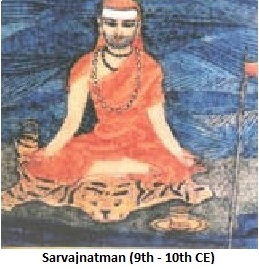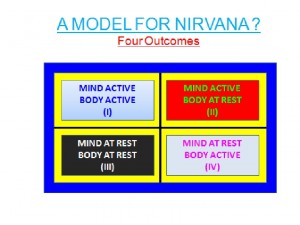 Sarvajnatman, a well-reputed advaita Acharya of the 9th-10th century, was the author of samkshepa shArIraka. As the title indicates, this book is a brief presentation of Sankara’s sUtra bhAshya in four chapters corresponding to the four adhyAya-s of the brahma sUtra-s.
Sarvajnatman, a well-reputed advaita Acharya of the 9th-10th century, was the author of samkshepa shArIraka. As the title indicates, this book is a brief presentation of Sankara’s sUtra bhAshya in four chapters corresponding to the four adhyAya-s of the brahma sUtra-s.
Sarvajnatman sums up the essential nature of brahman in ten words. They are:
nitya, suddha, buddha, mukta, satya, sUkshma, sat, vibhu, advitIya and Ananda
(eternal, pure, knowing, free, true, subtle, existent, auspicious, without a second and infinite (or happy)).
advaita teaches that you and brahman are one and the same. You being already brahman, the above ten words, therefore, describe you also. That means you, yourself, are Happiness. So Happiness should be known to you like you know the back of your hand. You do not have to search for or attain Happiness.
But an enigmatic question arises: Okay, I know that I am already eternally existing, knowing and ever happy brahman. How come then I don’t know the Happiness which should be present right here? What ghost of an obstruction would block me from feeling it, from seeing it?
The shAstra replies: Oh, Yea, something like the Ghost of Bharcchu can cripple you from seeing the very things that are right in front of you!
“The Ghost of Bharcchu? What’s that?,” you ask in wonderment.


